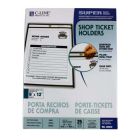7 Tips For Giving a Great Presentation
Presentations are an important part of the daily business world. Here are some things to keep in mind when you are putting your presentation together.
1. Brevity is Key. When was the last time you heard someone complain that a presentation was too short? Exactly. While you want to keep things relatively entertaining, and you of course want to make your points clear, you also should take the time to make absolutely sure that you are keeping your speech as slim and trim as you can. You don't want to bog your audience down with facts that they can't use, or anecdotes that do any thing but drive home the point you are trying to make.
2. Use Graphics. Whether by the use of presentation software such as PowerPoint or by handouts, use charts, graphs, and even photographs to help solidify appropriate sections of your presentation. To some, statistics can sound like nothing but a bunch of jumbled up numbers. Charts and graphs help to give visual learners something to remember your speech by, and in certain instances can really clarify things for them.
3. Audience Involvement. Whenever possible, it may be a good idea for you to get your audience physically involved in what you are trying to do. One idea is to offer a prize, such as a gift certificate to the person who can answer a couple of quiz questions about your presentation when you are finished. You can also ask questions of your audience as you go along, both to test how much they know, and to keep them awake and engaged.
4. Check Your Facts. Make sure that your facts are up to date and relevant. And please, if at all possible, go beyond the mighty Google (and, at the very least, take Wikipedia with a grain of salt). If you have the time a resources, call and interview the people who can give you the real numbers so you know that your facts are fresh.
5. Looking Good. The day of your presentation, bring and extra shirt and tie that you can change into in case of any lunchtime gravy or spaghetti sauce incidents. You should also spend some time cleaning and polishing your shoes the night before. A surprising number of people notice this particular detail of dress, and will judge you on it whether you like it or not.
6. Know Your Audience. Specifically, you should know what they know before you start. If you are talking to a group of industry insiders, it's fine to use jargon. If, however, you are speaking to people who need an introduction to your area of expertise, you should make sure to keep the insider lingo to a minimum. Stay within you audiences realm of understanding, and you have a better chance of holding their interest.
7. Materials. One great way to make sure that your presentation stays with your audience is to give them something to take with them. Product samples, brochures, documents, etc., are a nice touch when you are trying to engage an audience. Put all of your materials together in an attractively bound booklet, and you stand a much better chance of being remembered beyond the completion of your presentation.









